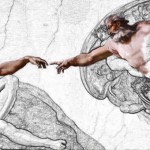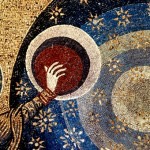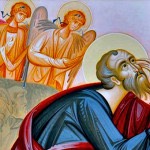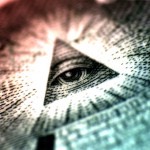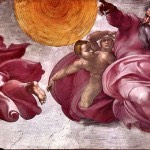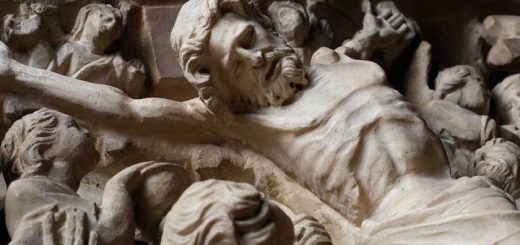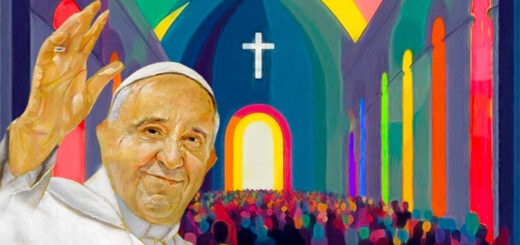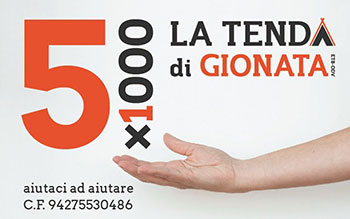The god of art. The images of God
- Images of God
- Images of God
- Images of God
- Images of God
- Images of God
- Images of God
.
Article by Melania Mazzucco taken from La Repubblica of 16 November 2012, page 48-49
Today everything can be made of everything. Paradoxically, in the era of speed and instantaneousness, transparent time, history dominates our way of understanding things. The story of concepts and objects, of peoples and mentality, natural or biological phenomena is written.
There are books that narrate the history of the ocean, latitude, childhood, diseases - but also of nutmeg, comb, clitoris, tobacco, rice, blasphemy and so on.
In monumental The images of God, just published by Einaudi (584 pages accompanied by a multitude of precious color illustrations), the Dominican François Boespflug, theologian and professor of the history of religions, addresses the most fascinating theme of all: the iconic history of God.
That is: as God was represented in the Christian West, from the death of Jesus to the present day - when we can speak of God's "aesthetic death". And between these two dead, there are two thousand years of theophanes - of paper and stone, of pigments and golden: because the transcendent and irreproachable God of Christians - unlike the God of the Jews and the God of Muslims - has tolerated to make himself visible through the image.
Not always. Christianity is born aniconic: it is the legacy of the decalogue ("You will not make yourself an idol or image of what is up there in the sky ...»). In the Gospels Jesus is not described. He has no face, nor features. He is evanescent to the point that a few hours after Maddalena death he mistakes him for a gardener and his disciples in Emmaus recognize him only when he breaks the bread.
In the Gospels we do not speak of art, and the first Christians are rather committed to destroying the idols of the pagans, worshipers of statues. But then, more than two centuries after the death of Jesus, irresistibly, the god of Christians has returned. Nobody has granted preventive authorization. It is a transgression: an act of audacity and freedom, by the clients, of the faithful, of the religious, of the artists. An irrepressible need for presence and closeness.
Irresistibly, almost repeating the scandal of the incarnation, God goes from tombs to houses, spreads on coins, in churches ... first is only a thaumaturge, or a symbol (lamb, fish, almond). But then he had a face, a mouth, hair and beard, he had his hands, feet, shoes, a dress. And a new epic began, what Boespflug calls: "The immense process of humanization of God".
It is a huge fact, which we Westerners, accustomed to living with the proliferation of images of an iconophilic civilization, we do not pay almost attention. As if it were a obvious event, and therefore universal and everyone understandable. It is not. Some more serious reflection took place only after the facts of 2006 - the violence generated by the Danish caricatures of Muhammad.
And it is also in the name of mutual knowledge and interreligious dialogue, and with the declared purpose of building with knowledge of peace, which Boespflug - after thirty -five years of research and numerous specialist publications - wanted to conceive this total work, which "studies, presents and tells the beginning, triumph and slow decline of what was the most extraordinary subject of thought and art".
The image of God is not eternal. It depends on men: it is therefore fatal. Each generation has created its own. The reader of this labyrinthine and Arduo book will have to be patient; He will have to rely on his guide, equipped with a boundless and together humble, always militant - even if sometimes he will find the inevitable selection surprising (the part reserved for the twelfth century and the one dedicated to Michelangelo), to have the lines on the kidneys, Poussin and Tintoretto or naive those on Tiepolo.
It will discover that a really rare intellectual adventure awaits him in this "transparent" time. And Boespflugl will accompany through the millennia, on a speleological journey into the mind of theologians, iconoclastic and heretics and in that of the "Pauperes" - in the name of whose construction, after the placet of Gregorio the Great, the Church has ended up accepting and promoting the images of God. A journey into history but also in geography: from the catacombs of Rome to the churches of Armenia, from Germany to Portugal, From Wroclaw to Pamplona, from Hungary to the Nile cataracts. Through art - in all its form.
Frescoes and miniatures, icons and relics, windows, sculptures. And in every support: the painted table, ivory, marble, alabaster. Among the anonymous masters of the Romanesque and the great of the Renaissance, between famous works such as the Trinity of Lorenzo Lotto in Bergamo, but also less known - enchanting such as the coronation of the Virgin of Endugorrand Quarton (1454) or upsets like the red Christ of the expressionist Lovis Corinth, a "degenerate" painter for the Nazis.
Pictures-Prototypes, which have fueled an infinite number of imitations and reproductions, and ephemeral or solitary images, present in a single specimen, a manuscript lost in the library of a provincial monastery, where nobody, apart from the monks, has ever been able to see them. Cultured or popular art, Ligia to the prescriptions of the Popes or unaware - indifferent to wars, to pestilences, to the laws: iconic history does not advance to the rhythm of current affairs.
Thus Boespflug teaches us that at the origins God was only Christ, and also the Trinity (the Father and the Holy Spirit) had his face: his youth is the eternal subtracted from time. Only in the mature Middle Ages God became the ancient of years, the bearded and elderly father who resisted in churches until recently. To become more and more similar to men - tired, collector, sore.
Until in the last two centuries the only possible God has returned to being Christ, and the crucifixion the only theme that continued to inspire modern artists - from Ensor to Picasso, from Chagall to Bacon. But by now it was no longer a matter of God: Jesus on the cross only the symbol of humanity suffering. And between Christian art and art has opened an abyss, perhaps unbridgeable.
Arrival point of a research lasting a whole life, and still open, the images of God has a rare gift: it is dictated by urgency and by necessity. As a believer, Boespflug allocates him first to believers - because, without nostalgia, "let God go away" and "in view of their ability to the future". But in truth it is the others who need it.
François Boespflug, The images of God, and. Einaudi, 2012, 584 pages


